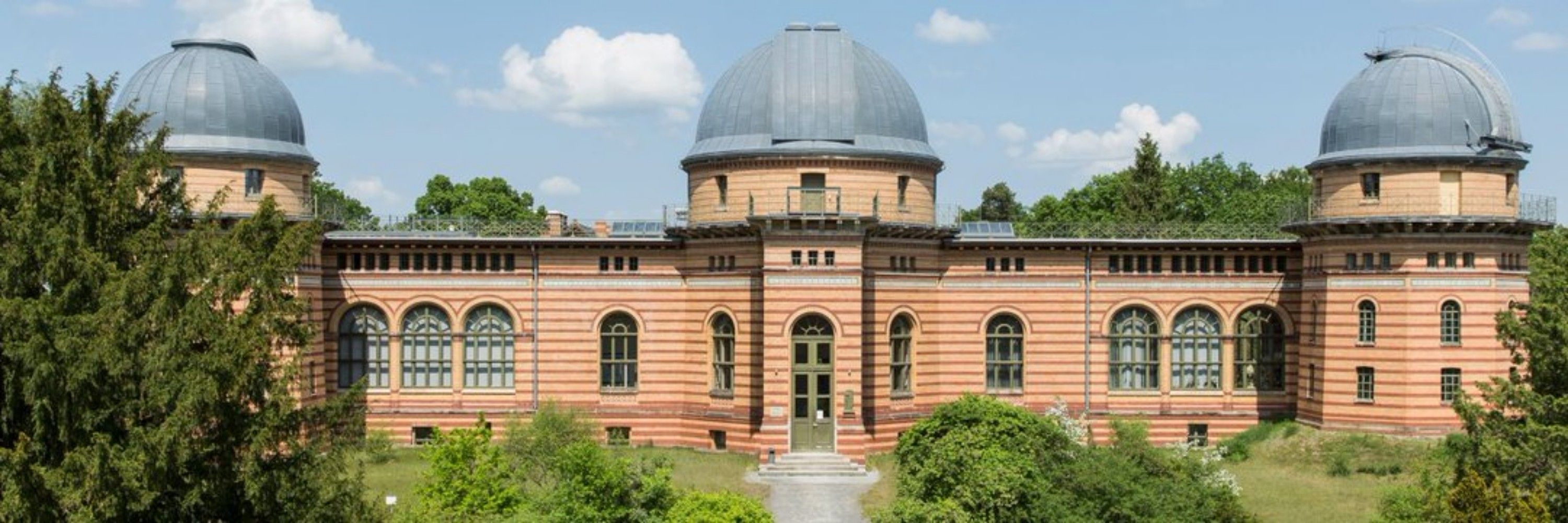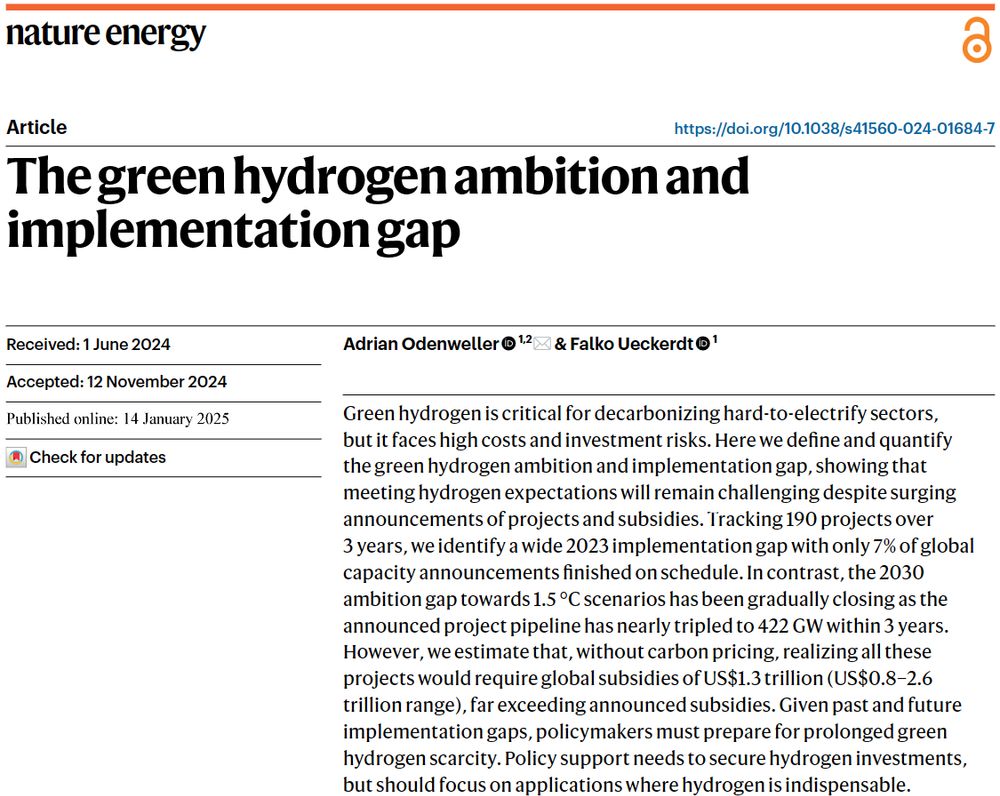
https://www.pik-potsdam.de/members/adrianod
3️⃣ The 2030 implementation gap
The flipside of the closing ambition gap is the wide open implementation gap. We estimate the cost gap between green hydrogen and fossil competitors for all 14 end-uses.
A staggering US$ 1.3 trillion of subsidies would be required to realise all projects by 2030.

3️⃣ The 2030 implementation gap
The flipside of the closing ambition gap is the wide open implementation gap. We estimate the cost gap between green hydrogen and fossil competitors for all 14 end-uses.
A staggering US$ 1.3 trillion of subsidies would be required to realise all projects by 2030.
2️⃣ The 2030 ambition gap
1.5°C scenarios show a very wide range of green hydrogen by 2030. But, as project announcements by 2030 have almost tripled over the past three years, there are now enough projects for most of the scenarios.
Lack of ambition is not the problem anymore.

2️⃣ The 2030 ambition gap
1.5°C scenarios show a very wide range of green hydrogen by 2030. But, as project announcements by 2030 have almost tripled over the past three years, there are now enough projects for most of the scenarios.
Lack of ambition is not the problem anymore.
1️⃣ The 2023 implementation gap
Tracking 190 global projects over three years, we find that green hydrogen has fallen dramatically short of expectations. In 2023, only 7% of the initially announced added capacity was realised and operational on time. Most projects are delayed, some disappear.

1️⃣ The 2023 implementation gap
Tracking 190 global projects over three years, we find that green hydrogen has fallen dramatically short of expectations. In 2023, only 7% of the initially announced added capacity was realised and operational on time. Most projects are delayed, some disappear.
⬇️ Short-term setback (2022, 2023): Announcements have reduced steadily as projects approach their launch year.
⬆️ Long-term promise (2024+): Announcements have surged steadily over the past three years.

⬇️ Short-term setback (2022, 2023): Announcements have reduced steadily as projects approach their launch year.
⬆️ Long-term promise (2024+): Announcements have surged steadily over the past three years.
1️⃣ The 2023 implementation gap: Announced vs. realised projects.
2️⃣ The 2030 ambition gap: 1.5°C scenarios vs. announced projects.
3️⃣ The 2030 implementation gap: Announced projects vs. projects supported by announced policies.

1️⃣ The 2023 implementation gap: Announced vs. realised projects.
2️⃣ The 2030 ambition gap: 1.5°C scenarios vs. announced projects.
3️⃣ The 2030 implementation gap: Announced projects vs. projects supported by announced policies.
In the Policy Brief, we call for an adjusted strategy that supports green hydrogen, but is grounded in reality.
📆 Join our webinar on 15th January 2025, 3:00-4:00 PM: https://buff.ly/3WdbzXD

In the Policy Brief, we call for an adjusted strategy that supports green hydrogen, but is grounded in reality.
📆 Join our webinar on 15th January 2025, 3:00-4:00 PM: https://buff.ly/3WdbzXD
How has green hydrogen developed recently? How much hydrogen is needed for 1.5°C? And what are plausible future pathways?
In a new Nature Energy study, we look at these questions.
🔗Article: https://buff.ly/3WeOh3G
🔗Policy Brief: https://buff.ly/3C2F6wm
#EnergySky

How has green hydrogen developed recently? How much hydrogen is needed for 1.5°C? And what are plausible future pathways?
In a new Nature Energy study, we look at these questions.
🔗Article: https://buff.ly/3WeOh3G
🔗Policy Brief: https://buff.ly/3C2F6wm
#EnergySky
How have green hydrogen projects performed in recent years? How has the role of hydrogen in 1.5°C scenarios changed? What are plausible future pathways given announced support policies?

How have green hydrogen projects performed in recent years? How has the role of hydrogen in 1.5°C scenarios changed? What are plausible future pathways given announced support policies?


